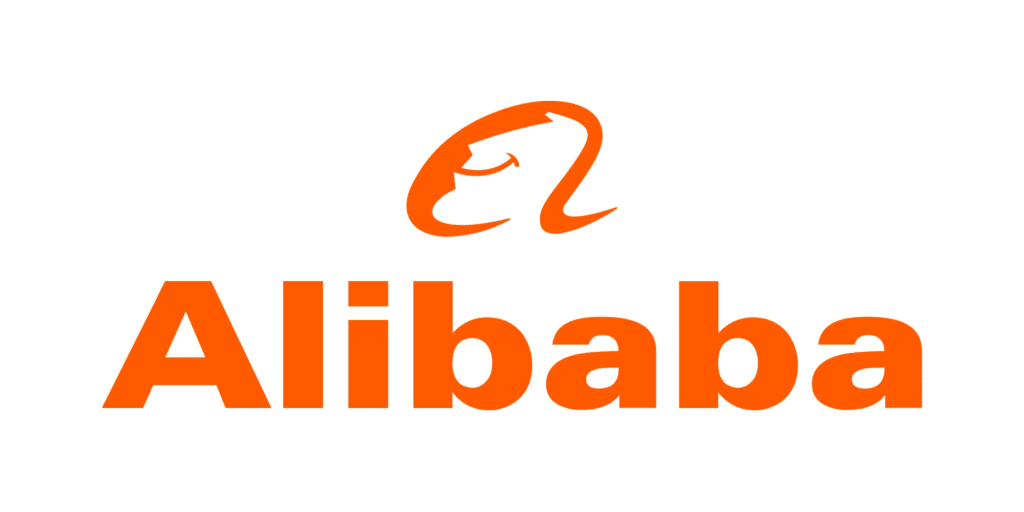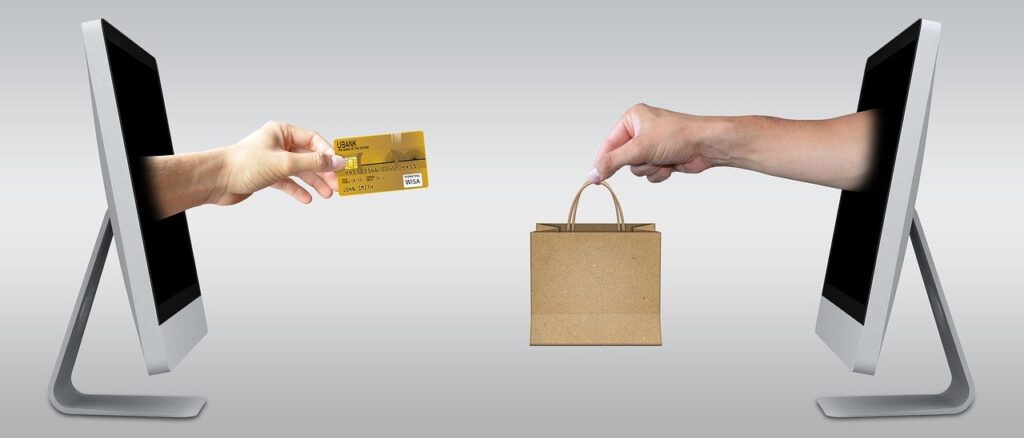E-commerce (electronic commerce) is the buying and selling of goods and services, or the transfer of funds and data, over electronic networks (primarily the Internet). It is also the best positive use of internet instead of destroying ourselves, please read “A Sage Media Diet“.
Frequently used the phrases e-commerce and e-business are interchangeable. Similarly, e-tail occasionally refers to transactional processes related to on-line retail shopping.
The e-commerce is done through internet. Customers visits the online shop / store to browse products or services and while selecting the desired item place the order while paying online. This whole process is called e-commerce.
E-Commerce Processes
While an order is being placed, the customer’s web browser communicates with the server hosting the e-commerce website. Order-related data is sent to a central computer, which is the order manager. It is then transferred to a database that manages inventory levels. A merchant system that uses an application such as PayPal to manage payment information. and bank computers. Finally, go back to the order manager. This is to ensure that we have sufficient inventory and customer funds to process the order.
When an order is confirmed, the Order Manager notifies the store’s web server. The customers will see a message informing them that their order has been successfully processed. The order manager then sends the details of the order to the warehouse or fulfillment department, informing them that the product or service can be shipped to the customer. At this point, you can ship physical or digital products to your customers or grant access to services.
Platforms that host e-commerce transactions include online marketplaces where sellers sign up for. For example Amazon; uses a Software as a Service (SaaS) tool that allows customers to “rent” their online store infrastructure. Or an open source tool managed by a company with in-house developers.
Types of e-commerce
Business-to-Business (B2B)
Business-to-Business (B2B) e-commerce refers to the electronic exchange of products, services, or information between businesses, rather than between businesses and consumers. Examples include online directories and product and supply exchange websites that allow businesses to find products, services and information and initiate transactions through electronic procurement interfaces. According to Forrester, US B2B e-commerce sales reached $1.7 trillion in 2021, a new forecast from Forrester (2022 B2B E-Commerce Forecast, US) finds that this volume is estimated to exceed $2 trillion in 2023 and $3 trillion by 2027. US B2B e-commerce, which will grow at a five-year compound annual growth rate (CAGR) of 10.7%, will also account for 24% of total US B2B sales by 2027 — compared to 16% in 2021.
B2B sellers work with:
- Wholesalers
- Large retailers
- Organizations such as schools or nonprofits
- Resellers
B2B examples

Business-to-Consumer (B2C)
Business-to-consumer (B2C) is the retail part of e-commerce on the Internet. This is the case when a business sells products, services or information directly to consumers. The term became popular during the dot-com boom of the late 1990s, when online retailers and merchandise sellers were a uncommon.
Today, the Internet is filled with countless virtual shops and shopping malls selling all kinds of consumer goods. Amazon is the most famous example of these websites. Dominating the B2C market.
B2C examples


Consumer-to-Consumer (C2C)
Consumer-to-Consumer (C2C) is a type of electronic commerce in which consumers exchange products, services, and information online with each other. These transactions are typically conducted through a third party who provides an online platform on which the transactions take place.
Online auctions and advertising are his two examples of C2C platforms. eBay and Craigslist are two popular examples of these platforms. Since eBay is a business, this form of e-commerce is sometimes called his C2B2C (Consumer to Business to Consumer). Platforms such as Facebook Marketplace and fashion resale platform Depop also enable C2C trading.
Other C2C examples

Consumer-to-business (C2B)
Consumer-to-business (C2B) is a type of e-commerce that makes products and services available online to consumers for businesses to bid on and buy. This is the opposite of his traditional B2C trading model.
A common example of a C2B platform is a marketplace selling royalty-free photos, images, media, and design assets such as iStock. Another example is a jobboard and similar website for Pakistan rozee.pk
Other C2B examples
- godaddy (selling domains and hosting)
- Google Adsense
- Youtube (a right place for advertisement)

Business-to-administration (B2A)
Business-to-administration (B2A) refers to online transactions between businesses and government or government agencies. Many departments of government rely on different types of e-services or products. These products and services are often related to legal documents, registers, social security, tax records, and employment. Companies can provide these electronically. It provides a platform for businesses to bid on government opportunities such as auctions, tenders and application submissions.
Consumer-to-administration (C2A)
Consumer-to-administration (C2A) refers to transactions that take place online between consumers and government or government agencies. Although governments rarely purchase products and services from individuals, but individuals often use electronic means in the following areas:
- Information dissemination.
- Distance learning
- Transfer of Legal Payments.
- Filing and Submission of tax returns.
- Find appointments, get information about illnesses, pay for medical services, and more.
Pros and cons of e-commerce
Pros of e-commerce
Availability
Unless there is an outage or routine maintenance, the e-commerce site is available 24/7, allowing visitors to browse and shop at any time. While conventional stores typically open at set times and may close entirely on certain days.
Speed
Congestion can slow shoppers in brick-and-mortar stores, but e-commerce sites work faster because computation and bandwidth must be considered on both the consumer’s device and the e-commerce site. . Product pages and cart pages load within seconds. Ecommerce transactions are just a few clicks away and take less than 5 minutes.
Wide Range
Amazon’s first slogan was “The Biggest Bookstore on Earth”. It could make that claim because it was an e-commerce site, not a brick and mortar store where the shelves had to be stocked with every book. E-commerce allows brands to offer a wide range of products, shipped from one warehouse or another after purchase.Customers are more likely to be successful in finding what they need.
Easy access
Customers who shop in brick-and-mortar stores may have difficulty finding certain products. Website visitors can browse product category pages in real-time and use the site’s search function to find products instantly.
International reach
Physical stores sell to customers who visit them. E-commerce allows businesses to sell to anyone with internet access. It has the potential to expand a company’s customer base beyond physical boundaries.
low cost
A pure e-commerce business avoids the costs of running a brick-and-mortar store, such as rent, inventory, and huge payroll. However, shipping and storage charges may apply that is negligible to other maintenance costs described above.
Personalization and product recommendations. E-commerce websites can track the browsing, searching, and purchasing history of their visitors. This data can be used to provide personalized product recommendations and gain insight into your target market. Examples of this are sections on Amazon product pages such as “Frequently Bought Together” and “Customers who viewed this item also viewed”.
Cons of e-commerce
Limited customer service
If a store customer has a question or problem, they can contact a store clerk, cashier, or store manager for assistance. E-commerce stores may have limited customer service. Websites may only offer support during certain hours, and online service options may be difficult to navigate or may not answer certain questions.
Limited product experience
Looking at the image on the web page gives a better impression of the product, but it is different from directly experiencing the product. For example, playing guitar, evaluating picture quality on TV, trying on shirts and dresses. Ecommerce consumers may end up buying products that, unlike their expectations, require a return. In some cases, the customer must pay to ship the returned merchandise back to the retailer.
Waiting period
At the store, the customer pays for the product and takes it home. In e-commerce, customers have to wait for the goods to be shipped. As next-day and same-day deliveries have become commonplace, delivery times have been shortened, but not instantaneously.
Safety and Security
An experienced hacker can create a lifelike website of his that claims to sell famous products. Instead, the sites send customers counterfeit or counterfeit versions of those products, or simply steal credit card information. Legitimate e-commerce sites also pose risks, especially when customers store credit card information with retailers to facilitate future purchases. Data breaches can also damage a retailer’s reputation.
Future of e-commerce
Retail ecommerce sales worldwide from 2014 to 2024
In billion U.S dollars
Sourced from Statista
![]()
2014
1,336
2015
1,548
2016
1,845
2017
2,382
2018
2,982
2019
3,354
2020
4,380
2021
4,891
2022
5,424
2023
5,908
2024
6,388
